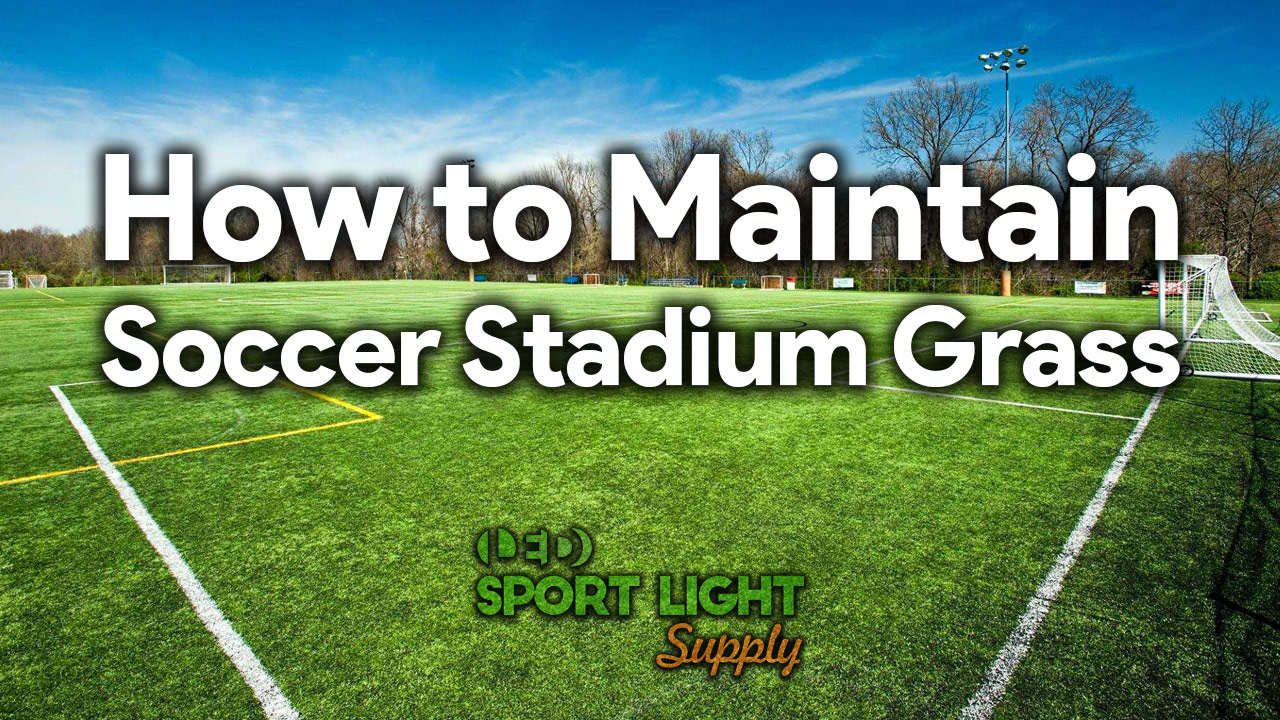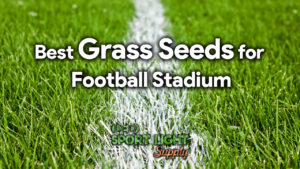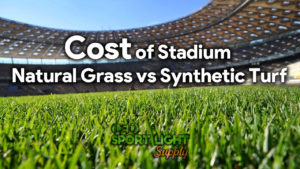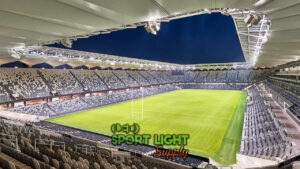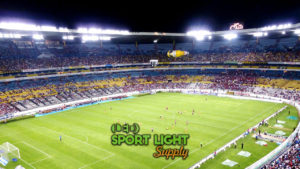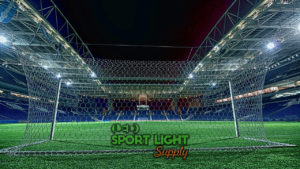Maintaining your soccer stadium grass is one of the primary strategies for budgeting and saving money. When you maintain the grass or turf, you can build a better financial future for yourself or the educational institution you represent.
Of course, not many people overlook ordinary lawn care and maintenance. But you should know the best practices and techniques to get the best out of your investment. So, here are ten ways to maintain the football field grass.
Find the solution that works best for you
The first five strategies concern natural grass. Instead, the remaining five pertain to artificial soccer turfs. Please, review both as they will also explain when to switch to the other.
For reference, natural grass and synthetic turf are different sides of the same coin. Knowing both options is a crucial aspect of smart financial management. Especially in these troubled times.
5 ways to maintain the natural stadium grass
1. Using grow lights
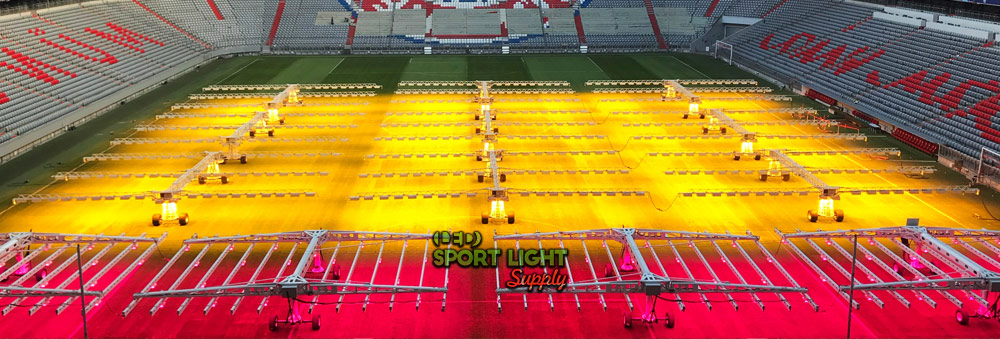
In case you didn’t know, grass grows lights for stadiums are a real thing. In brief, they are professional systems for the maintenance and growth of the natural turf. These special machinery will increase and improve the growth of grass in your soccer stadium.
Thanks to an innovative design, you can fix several grow lights on a modular structure and carry them on the football field. Of course, the machinery is connected to the power grid and takes advantage of its ultralight design. The lightweight frame is necessary to prevent marks on the ground.
Easy to install and handle, grow lights accelerate the synthesis of plant food. You can use them during the colder seasons. Usually, you would mount LED lights for intensive use and saving running expenses. But you can take them out anytime the roofing of the stadium causes prolonged shades.
By setting an appropriate schedule, you can measure the exponential growth and strengthening of the soccer field. Intensive use helps plants to root firmly into the ground. As a result, the grass will resist intense games and actions for longer.
Using grow lights is critical for the parts that are most exposed to wear and tear. That is, the mid-field lines. Of course, you should use it in the goal areas as well. Mainly to ensure a soft, thick landing area for the goalkeepers.
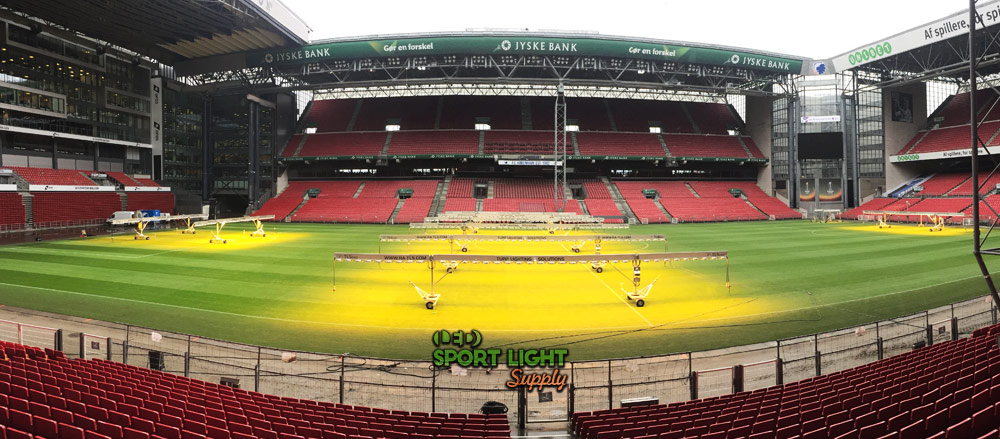
Which lights should you use?
To maintain your soccer pitch green, you should either choose white cold lights or red and blue panels. Whatever you choose, make sure you get lights powerful enough to illuminate a good area per fixture. You will need to look at the lumen output and wattage data in the specifications.
Low-quality lights emit fewer lumens than advertised. Similarly, they consume fewer watts. Even the high-end lights may be just as guilty in giving you a lower performance than advertised. So, always check the power draw from the wall.
Power readings are vital to get the best value for money. In short, grass can absorb different spectrums. So, you need to select a product with the best PAR spec. Unfortunately, finding an accurate PAR rating with documentation you can trust is hard. This is why you should always search for the best grow lights instead of buying cheap grow lights that will not help you yield results.
2. Mowing the lawn frequently
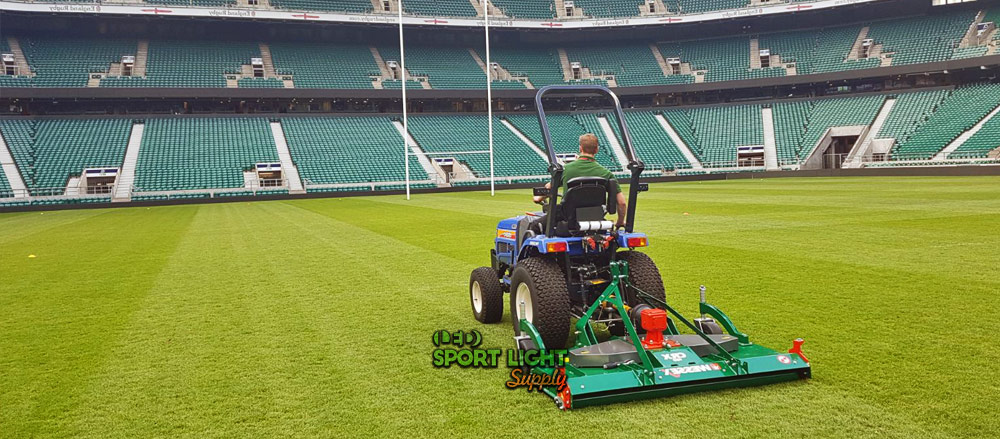
The frequency of the mowing depends on where the stadium is and how healthy your soccer field is. For the most part, you should remove only 1/3 of the leaf surface per cutting. But if you cut more than 1/3 in any single mowing, you are not mowing enough.
Keep a yearly record of temperatures and growth. Soon, you will have a more precise idea of the perfect schedule. Until then, measure the grass height on a small portion every week. Then, determine if you need to increase the number of mowing sessions per week.
Of course, you should avoid stressing the grass too much. When you cut more than 1/3 of the abaxial surface, the gas exchange changes suddenly. So, it is better to keep an even adaxial surface by training the grass to grow at a fixed height. In this way, you will also decrease the number of necessary amendments to help your plants recover from the stress.
Beware the grass seed species and variety
Simple lawn care strategies for mowing the soccer field work best. Nonetheless, keep in mind that each grass type has a recommended height. Depending on where the stadium is, you might want to choose a precise grass seed. For example, Bermuda grass seeds if the stadium is a warm temperate climate zone.
- From a minimum height of 0.5 inches, Bermuda grass should be no taller than 2.5 inches.
- Fine fescue remains green for longer when it grows between 1.5 and 3 inches.
- Kentucky bluegrass gives you a slightly bigger range (1 to 3.5 inches).
- Maintain Perennial ryegrass as low as 0.75 inches and no taller than 2.5 inches.
Most grass varieties will look better at a lower cut. Instead, for most of the cool-season grasses, you can cut these species a little bit higher to help them fight the cold. By cold season grasses, I mean Fine and Tall Fescue, Kentucky bluegrass, and Perennial ryegrass.
Mowing frequency and overall maintenance go hand in hand. Besides, they will determine how well the cold season grasses will survive the summer heat. Of course, always follow the 1/3 rule you read above.
3. Best practices for feeding your natural lawn
Caring for your soccer field grass is very similar to making money. First, you take care of it with water and the proper nutrients. Over time, the football pitch produces good fruit.
Like with money, you need to start well by creating a good foundation. Which, of course, include topsoil, good seed, periodic watering. The plan you build sets you up better than ever before. But you still need to feed your lawn correctly. Plus, spray weeds as soon as you see them in the field.
During early spring, maintenance takes the form of fertilizing. But you should avoid dumping a ton of fertilizer all at once in the springtime. Doing so causes a lot of excess growth in the end.
If you prepared, you should have fertilized the pitch in the fall of the previous year. That is the time when you can dump more fertilizer. In this way, the extra nutrients should carry you over into the spring. More importantly, it will get you through the flush growth of the season.
In spring, liquid fertilizers are better for a much controlled lower rate. You can use biorational pesticides with more accuracy. Plus, you avoid any imprecise spreading due to a broadcast spreader. You can treat each brown patch and inspect the crown at the same time.
Don’ts of grass management
Avoid putting down excessive pounds of Nitrogen. Otherwise, you will notice that the authentic grass is growing like wildfire every day. Grass will grow fast anyway during the spring flush season. So, adding too much fertilizer at the beginning only increases the times you will need to mow it.
Only use more fertilizer if you neglected the pitch for a while. Or if you did not fertilize it last Autumn. Either way, frequently mow the grass blades to keep the crown at the same height.
After the grass leaves dormancy, wait until it starts growing. Then, add fertilizer gradually and continue during summer. Control your rates with fertilizer and use less than usual if you do not want to mow the pitch often.
Try to spot any senescence and lime green spots areas early on. By any means, avoid fertilizing the green spots because these spots will show an excess overgrowth. Instead, proceed to fertilize and/or overseed senescence-like plants. But before you do that, check for weeds.
4. Apply grass seed to bare spots
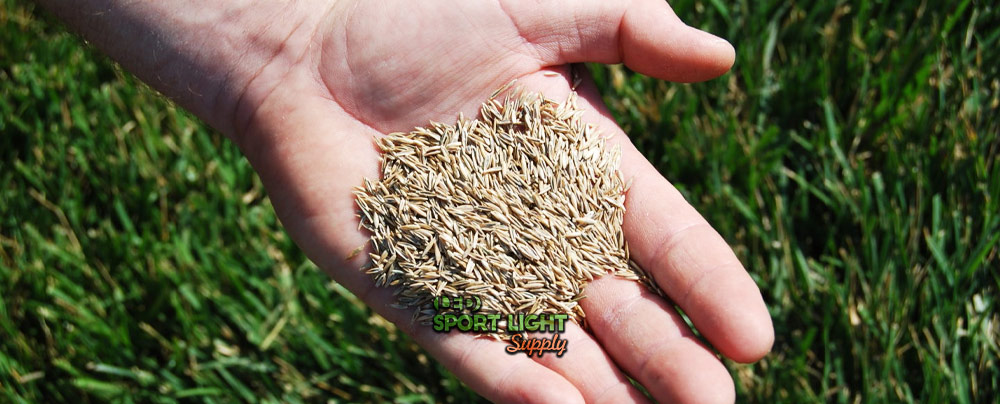 The process of overseeding improves the overall look of the soccer pitch. In brief, the goal is to add new grass seeds to an existing field. In other words, you do not remove the grass that was there but aims at filling the bare spots.
The process of overseeding improves the overall look of the soccer pitch. In brief, the goal is to add new grass seeds to an existing field. In other words, you do not remove the grass that was there but aims at filling the bare spots.
For starters, you can improve the varieties of grass in the field. Sometimes, maintenance can turn into a gradual change of grass type over time as well.
Usually, it is better to begin overseeding in September. But if your stadium is in the South, you can start a little bit later into the fall. If the stadium is up North, you should start this process even earlier. More importantly, focus on a better grass type for the upcoming fall and winter.
Before you overseed, cut your grass as short as possible. Still, follow the 1/3 rule. Most likely, the football field will look rough for a while. But it will bounce back to being green in just a few weeks.
After mowing, follow with detaching if necessary. Check the lawn for either thatch buildup of dead grass. For example, signs of summer stress or fungus. After that, examine the soil layer. If you find a spongy layer of brown and dead organic material, and if it is more of a half-inch buildup, proceed with the detaching process.
You can either use a professional tool like a detaching machine or a rake. Luckily, you can rent a dethatching machine. Then, remove all the dead material to prepare the soil for the new seeds.
5. Aeration
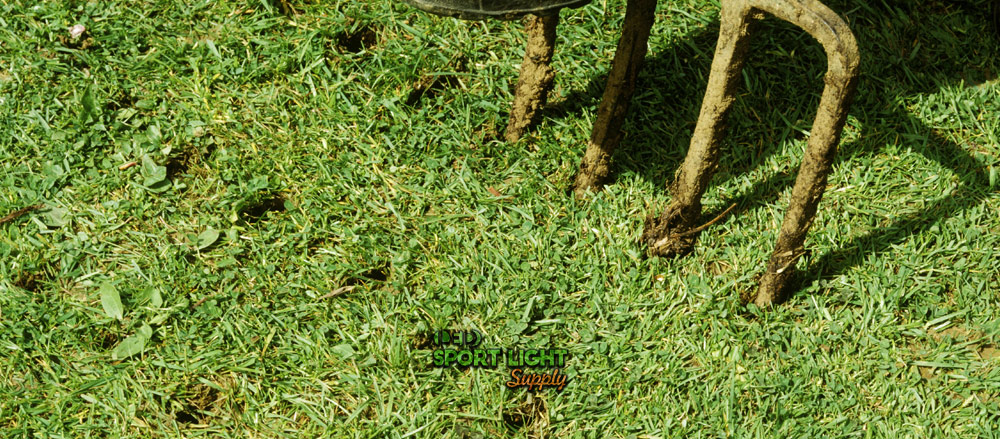
Aeration is not essential for overseeding and other cultural practices. But core aeration can help improve the quality of your grass health. In detail, aeration refers to the removal of plugs of soil. By putting them up on top of the surface, it allows the plug to break down.
At the same time, aeration ensures a little bit of top dressing on the playing area. With the right equipment, you can create small holes to give the grass some air. It increases permeability and helps the nutrients to penetrate down into the root zone of the plants. Above all, it helps the plants grow solid roots.
In soccer, positioning and movement cause a lot of stress to the grass. Yet, playing and settling into space is a key skill. Strategy is all about passing and sliding over with the play to find a pocket of space.
Of course, attackers and defenders stomp on the ground many times while trying to get the ball back. Many players let themselves fall to draw a foul. So, they roll on the grass and sometimes kick it when hitting a penalty kick.
How do you know if you need to aerate the soccer field?
First, go into a section and take a screwdriver with you. Do this test after summer. Especially if you noticed desiccation after summer droughts. Try to put it down into the ground. If you find no resistance, then you do not probably need to aerate the pitch. But if you have trouble putting it down into the soil, do the core aeration process.
5 ways to maintain the artificial stadium turf
1. Remove leaves and debris
To make sure the artificial grass lasts its entire lifespan, basic maintenance includes regular cleaning. Removing leaves and debris maintains the pitch enjoyable. Luckily, cleaning a synthetic field is low-cost and easy to do.
You can do most of the removal with a powerbroom. But if you want to make it look good, all you need is a professional cleaning solution. With a sprayer attached to a hose, you can spray on the whole pitch and let it work.
You can rent professional equipment for removing any debris as well. Instead, the cleaning solution you will need depends on how intensively the players use the turf. In fact, you must use solutions specifically designed for artificial turf. But at the same time, you must consider the players’ safety.
Cleaning is an opportunity for routine sanitizing. These days, you can find plenty of non-toxic, biodegradable, hypoallergenic cleaners. So, you can use them safely. Even if you host many community events with high-school students and kids.
Deep clean your turf periodically. It will help you mask or wash away any unpleasant smells. Plus, you can use a low level of chlorine mixed with water to kill germs and pathogens that can cause mold.
2. Apply weed killer
Although you may have installed a weed barrier in the underlay, weeds can still ruin your artificial grass. Especially in summer. If the ground cover breaks, clover can easily sprout and multiply. Then, you may have to struggle with it off and on because it is almost impossible to eradicate.
Weed pollen is airborne. So, many weeds can find their way to your stadium and on your synthetic field. So, think of this issue as something inevitable that you will have to deal with at some point.
Small weed patches in your turf may start to stick out unexpectedly. Luckily, you can spray them as soon as you spot them. Mainly because you do not have to worry about the fake grass to suffer from them. But you should follow the temperature restrictions and instructions of the weed killer spray that you use.
In hotter weather, some spray might pass off in vapor. This means that the chemicals can vaporize and drift around, reaching other people or plants nearby. In short, these gasses can get dangerous and harmful.
3. Use a plastic snow shovel during winter
A snowplow for sports fields is not always the best choice. If you want to maintain perfect turf, you should opt for plastic equipment. Or anything that might not break the synthetic grass fiber.
Indeed, you can rent a containment plow for clearing snow from the artificial soccer pitch. But you should make sure that the machine glides over the fake grass without turning the grass fiber into crumbs.
Snow can lead to cancellations of sporting events. But with proper maintenance, you can follow through with your event management. After all, players can run straight onto any ball on artificial grass during any season.
Synthetic turf is always game-ready. But you should make sure that the tractor or machinery mounts appropriate tires that will not damage the grass blades.
Most tires look the same. But the difference is underneath the external appearance. That is, the construction tech makes a difference. For example, the radial design is a recent addition that performs better than traditional designs.
4. Consistent turf care
Clearly, you do not have to water a football turf. But you must rinse it frequently. Mainly because rain is not always going to take away the dirt on the pitch. Then again, players spit and snort constantly. Even on indoor soccer pitches and training fields.
Hose the turf at least once a week. Then, brush the synthetic lawn. Do not wait for bad smells to come out or spillage before you address this maintenance issue. Especially if you want to host top professionals or kids in your stadium.
Water can freshen your turf up. After heavy traffic, fake grass lays down and develops a bad odor. Over time, bad smells keep building up until the whole pitch stinks.
You can contact a lawn care company for a square footage quote. In most cases, the price is low. Usually, there are a lot of processes that go on within that value.
With so many players and referees on the playing field, consistent turf care ensure the best safety standards. Plus, regular brushing prevents fibers from matting.
5. Extend the synthetic lawn turf warranty
Well, this last method does not involve effort. But it could save you a lot of money. Fake grass is a manufacturing product. As such, you can extend warranty plans upon purchasing it.
As you might have guessed, you should ask for an extension of the warranty before you buy. However, test the product first. Request a sample and evaluate how it looks and feels for a while.
Some low-quality products do not deserve any extension. Instead, you should search for the best products you can find. The reason behind this is that high-quality manufacturers also provide better extra warranties and services. For example, advanced replacement and repair services.
Premium quality materials do not break or tarnish easily. Plus, they ensure a full-fledged soccer game that fans in the bleachers will love. Just remember to get coverage for common problems like:
- drainage problems
- heat damage
- installation problems due to seam defects
- lifted edges
- the wrong type of fake grass rolls
- UV discoloration
Why do we need to maintain stadium grass?
In short, you can save money and ensure player safety with proper lawn care and maintenance. But it is important to understand your why for this change as well. Your reasoning may take you to a different conclusion. For example, you might want to create a budget for expanding your stadium or other investment.
In many cases, saving money is a reason most stadium owners, managers, and athletic directors share. Perhaps, some investors may want to increase their wealth. Yet, digging a little bit deeper will prove to be a worthwhile quest.
Choosing to maintain the natural grass or synthetic football field should be part of a bigger goal. From this perspective, setting and reaching new goals can be a motivator factor.
Maybe, you can aim to host professional soccer matches. Bit by bit, you can save to fulfill the requirements for the USL Championship. Nothing really stops you from elevating the quality of your sports arena to host bigger events and attract more athletes and fans.
6 Reasons to maintain the football field grass
- Better tracking of your expenses thanks to a well-defined schedule
- Expand your sports venue and retire much earlier than the average American
- Improve the profitability of the soccer field for broadcasting sports events in the arena
- Increase budget for going on a worldwide trip and meet new investors
- Protect the soccer players, children, students, and everyone who access the stadium
- Protect your main asset for sport management

